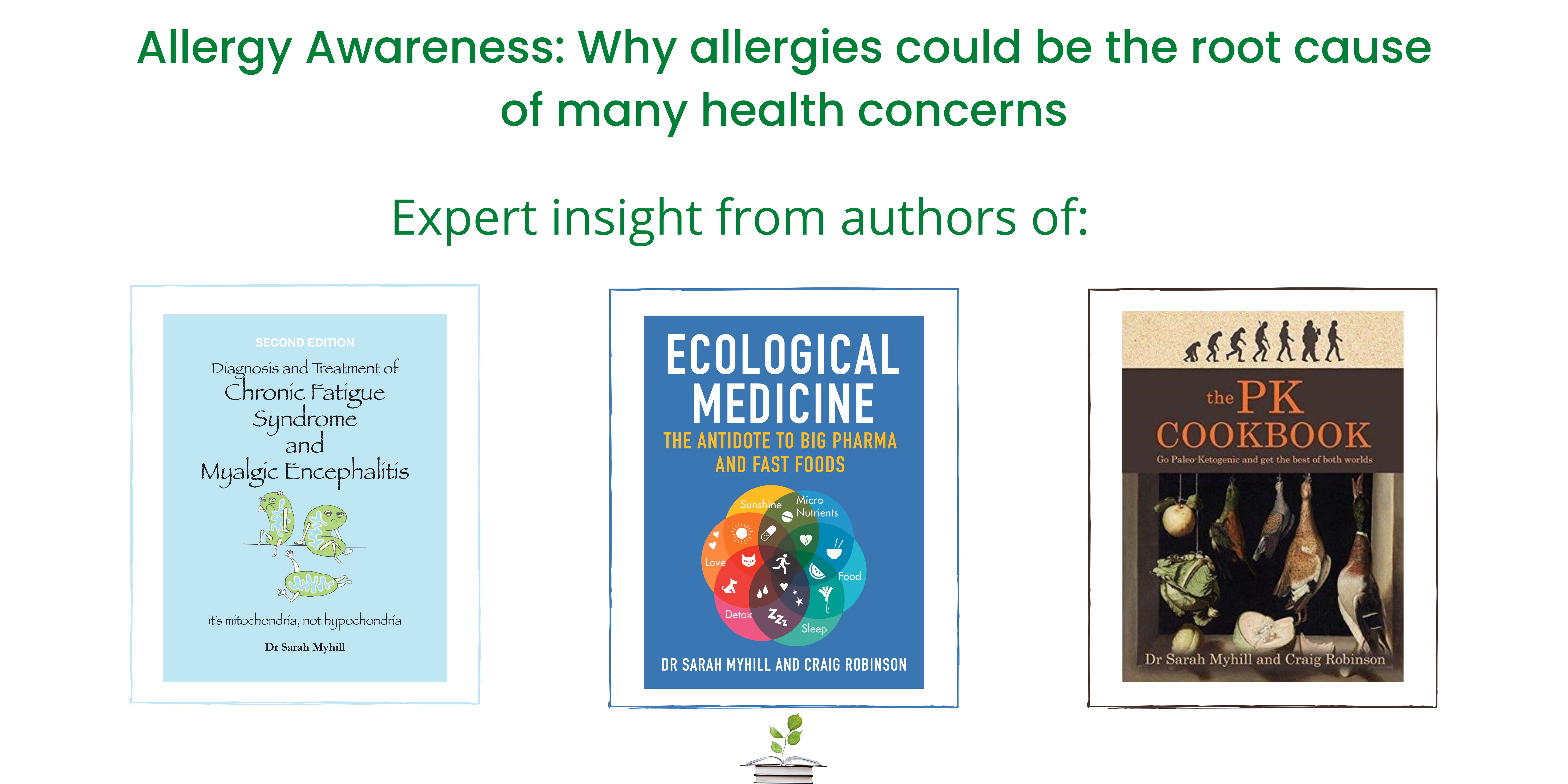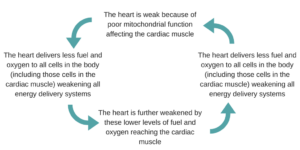
Blog written by Sarah Myhill, author of Diagnosis and Treatment of Chronic Fatigue Syndrome, Ecological Medicine, and The PK Cookbook
Allergy is the inflammation which results from response to substances (called antigens) from outside the body. Some of these present no threat to the body. Examples include pollen, house dust mites, animal dander and foods. Some antigens do pose a threat in high doses, such as metals (lead, mercury, arsenic, nickel), toxic chemicals (pesticides, solvents) or electromagnetic radiation (wi-fi, mobile phones, cordless phones etc).
Allergy has been known about for centuries. For example, 5-10 per cent of people with asthma are also allergic to sulphites. Pliny the Elder wrote of this when he reported the case of an asthmatic patient (rare for his times) who died from a bronchospasm in 79 AD after the eruption of Mount Vesuvius. The patient had lived a ‘normal life’ but for this ‘one incident’.
Allergy is the great mimic and can produce almost any symptom. Furthermore, one can be allergic to anything under the sun, including the sun! Allergy is also common – at least 30 per cent of the population are allergic to some foods. However, by the time allergy has produced fatigue (the major focus of my work as a doctor) it has usually caused other problems beforehand. Suspect an allergy problem if any, or a combination, of the following are present:
* The onset of fatigue is pre-dated by, and/or there is a long history of:
* asthma, sinusitis, rhinitis, eczema or urticaria
* irritable bowel syndrome with wind, gas, bloating, abdominal pain, alternating constipation and diarrhoea
* migraine or headaches
* joint (arthritis) and muscle pain
* mood swings, depression, anxiety, PMT
* almost any unexplained, recurring, episodic symptom.
- Childhood problems – This would include being a sickly child with recurrent ‘infections’, such as tonsillitis (actually probably allergy). Indeed, a colleague who is a consultant paediatrician considers it medical negligence to surgically remove tonsils without first doing a dairy-free diet. Rhinitis, sinusitis, catarrh and colic are typical dairy allergy symptoms.
- Symptoms change with time – Often the allergen is the same, but the symptom changes through life. Allergy to dairy products typically starts with colic and projectile vomiting as a baby, followed by toddler diarrhoea, catarrh and glue ear, recurrent infections (tonsillitis, croup, middle ear infections) and ‘growing pains’. Teenagers develop headaches, depression, irritable bowel syndrome, PMT and asthma. In adult life, muscle, tendon and joint pain (arthritis). Any of the above may be accompanied by fatigue.
- There is a positive family history – I have yet to find a patient who is dairy allergic who does not have a first-degree relative (parent, sibling, child) who also has symptoms suggestive of allergy to dairy products. Allergy to gluten grains also runs in families.
- There is a tendency to go for a particular food – One of the interesting aspects of allergy is that sufferers often crave the very food to which they are allergic. This was illustrated by one patient who told me that when he died he wished to take a cow to heaven with him. It was dairy which was his main problem! If wheat appears with every meal, then allergy to such is likely.
- There are symptoms of fermenting gut – Microbes from the gut are minuscule and easily spill over into the bloodstream. This is called ‘bacterial translocation’. These bacteria do not cause septicaemia (blood poisoning), but they may cause allergy reactions at distal sites. I suspect many clinical pictures can be explained by this, including irritable bladder, interstitial cystitis, intrinsic asthma, chronic urticaria, chronic venous ulcers, polymyalgia rheumatica and arthritis (osteoarthritis, rheumatoid arthritis, ankylosing spondylitis and so on).
How to identify your personal food allergies
I never do tests for food allergy because they are unreliable. False negatives are common – so, for example, many people who are intolerant of gluten will test negative for coeliac disease. Often, when the test is negative, they are told by their doctor that it is safe to eat that food – not so! There are many tests for food allergy on the market, but again I find positive results can be misleading, not least because the patient believes absolutely in the accuracy of tests and ends up avoiding foods unnecessarily or eating foods which are causing them symptoms.
The only reliable way to diagnose food allergy is by an elimination diet. The key is to cut out those foods that one is consuming daily. The reason that reactions may be prolonged or delayed is that daily consumption masks the link between exposure and symptom. Western diets include daily consumption of grains, dairy products and often yeast. If in addition one is eating other foods, such as potato, soya or tomato, or drinking regular tea, coffee or whatever on a daily basis then this too should be excluded. One should stay on this diet for at least one month before reintroducing foods to the diet – this should be done cautiously since reactions can be severe. Dr John Mansfield developed a practical, easy-to-follow elimination diet that is described in his last book, Six Secrets of Successful Weight Loss.
The Stone-Age or Paleo diet is a ‘best guess’ diet and a useful starting place, hence my recommendation of the PK (Paleo-Ketogenic) diet as explained in our book Paleo-Ketogenic: the Why and the How. If it transpires that there are multiple allergies, then these days I do not put people on a more restricted diet – that is because some people get completely stuck on two or three foods and are unable to bring in new foods because of the above severe reactions. Instead, I put in place the interventions I recommend for a general approach to inflammation together with specific desensitisation techniques to switch off allergy (see our book Ecological Medicine).
Increasingly I am finding that one does not have to be perfect to reduce allergy and allergy symptoms. Simply reducing the total load is helpful – attention to the general approach is as important as specific desensitisation. However, the key steps are:
- The PK diet
- Extinguishing the inflammatory fire with my Groundhog Chronic regime (see any of our books) including antioxidants, especially vitamin C
- Identifying possible causes, not forgetting micro-organims in the upper gut that should not be there, and eliminating or avoiding them
- Detoxing to reduce the factors that cause inflammation
- Reprogramming the immune system with probiotics, micro-immunotherapy, enzyme potentiated desensitisation (EPD) and neutralisation – all explained in detail in Ecological Medicine.


